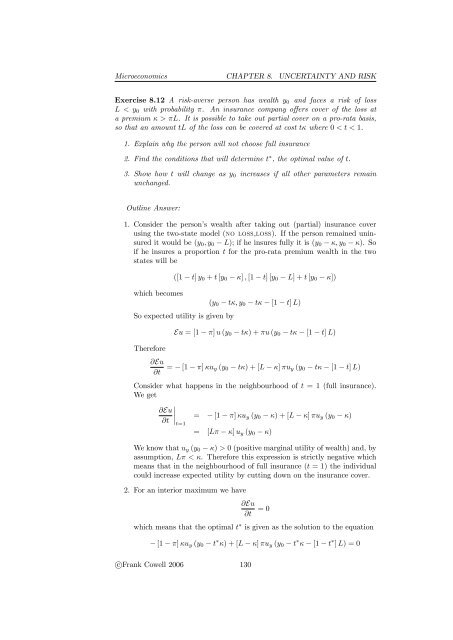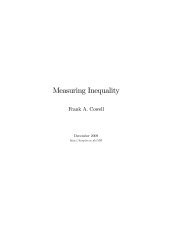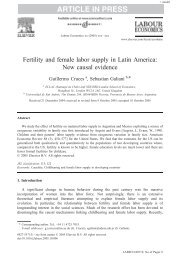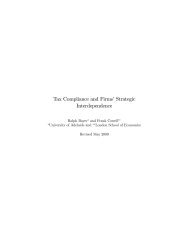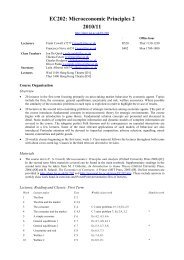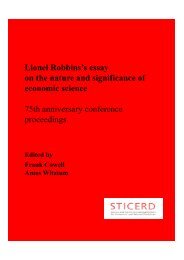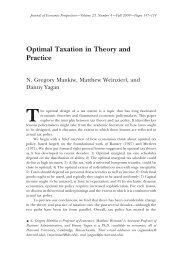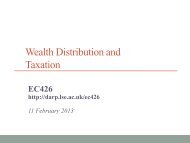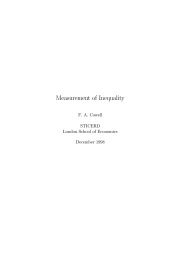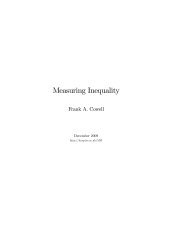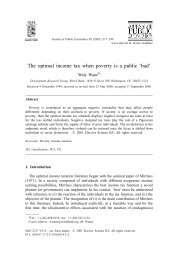Uncertainty and Risk - DARP
Uncertainty and Risk - DARP
Uncertainty and Risk - DARP
You also want an ePaper? Increase the reach of your titles
YUMPU automatically turns print PDFs into web optimized ePapers that Google loves.
Microeconomics CHAPTER 8. UNCERTAINTY AND RISK<br />
Exercise 8.12 A risk-averse person has wealth y 0 <strong>and</strong> faces a risk of loss<br />
L < y 0 with probability . An insurance company o¤ers cover of the loss at<br />
a premium > L. It is possible to take out partial cover on a pro-rata basis,<br />
so that an amount tL of the loss can be covered at cost t where 0 < t < 1.<br />
1. Explain why the person will not choose full insurance<br />
2. Find the conditions that will determine t , the optimal value of t.<br />
3. Show how t will change as y 0 increases if all other parameters remain<br />
unchanged.<br />
Outline Answer:<br />
1. Consider the person’s wealth after taking out (partial) insurance cover<br />
using the two-state model (no loss;loss). If the person remained uninsured<br />
it would be (y 0 ; y 0 L); if he insures fully it is (y 0 ; y 0 ). So<br />
if he insures a proportion t for the pro-rata premium wealth in the two<br />
states will be<br />
which becomes<br />
([1 t] y 0 + t [y 0 ] ; [1 t] [y 0 L] + t [y 0 ])<br />
So expected utility is given by<br />
Therefore<br />
@Eu<br />
@t<br />
(y 0 t; y 0 t [1 t] L)<br />
Eu = [1 ] u (y 0 t) + u (y 0 t [1 t] L)<br />
= [1 ] u y (y 0 t) + [L ] u y (y 0 t [1 t] L)<br />
Consider what happens in the neighbourhood of t = 1 (full insurance).<br />
We get<br />
@Eu<br />
@t = [1 ] u y (y 0 ) + [L ] u y (y 0 )<br />
t=1<br />
= [L ] u y (y 0 )<br />
We know that u y (y 0 ) > 0 (positive marginal utility of wealth) <strong>and</strong>, by<br />
assumption, L < . Therefore this expression is strictly negative which<br />
means that in the neighbourhood of full insurance (t = 1) the individual<br />
could increase expected utility by cutting down on the insurance cover.<br />
2. For an interior maximum we have<br />
@Eu<br />
@t<br />
which means that the optimal t is given as the solution to the equation<br />
= 0<br />
[1 ] u y (y 0 t ) + [L ] u y (y 0 t [1 t ] L) = 0<br />
cFrank Cowell 2006 130


